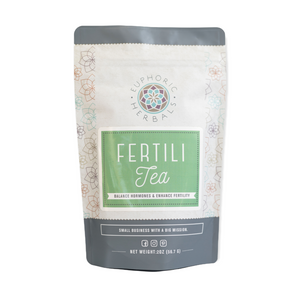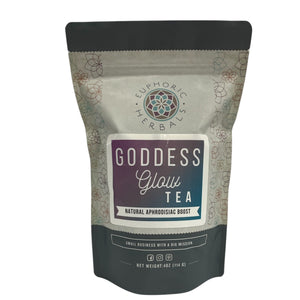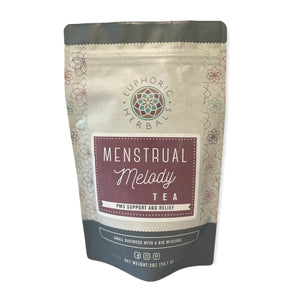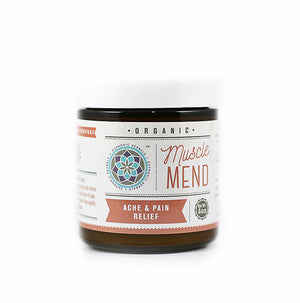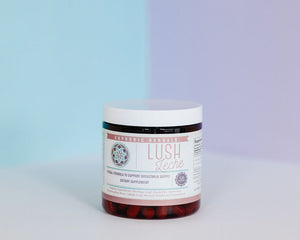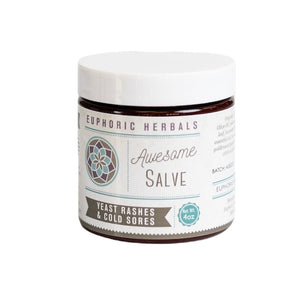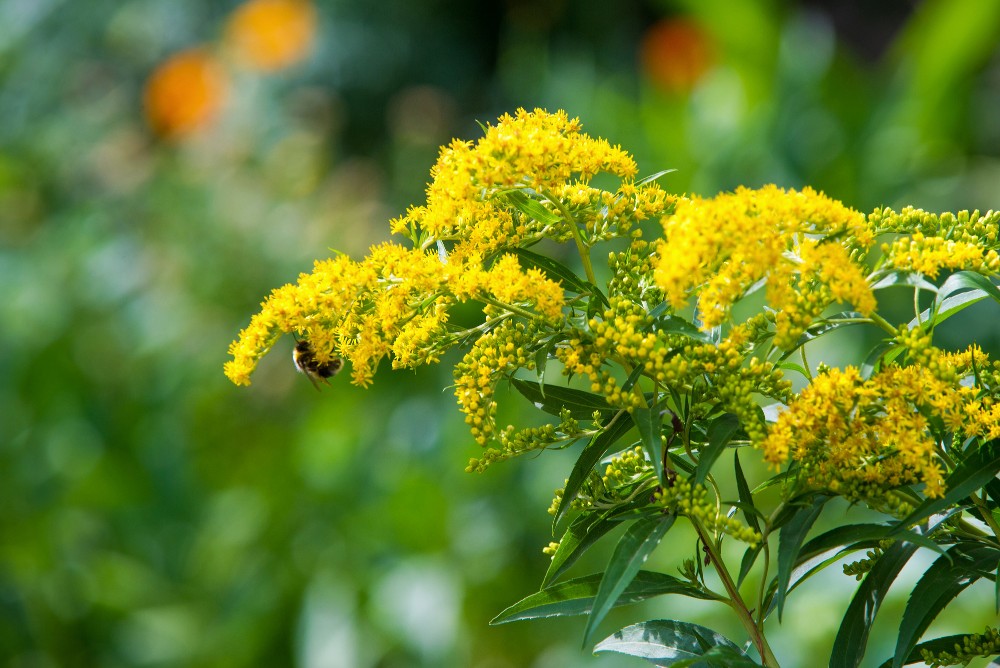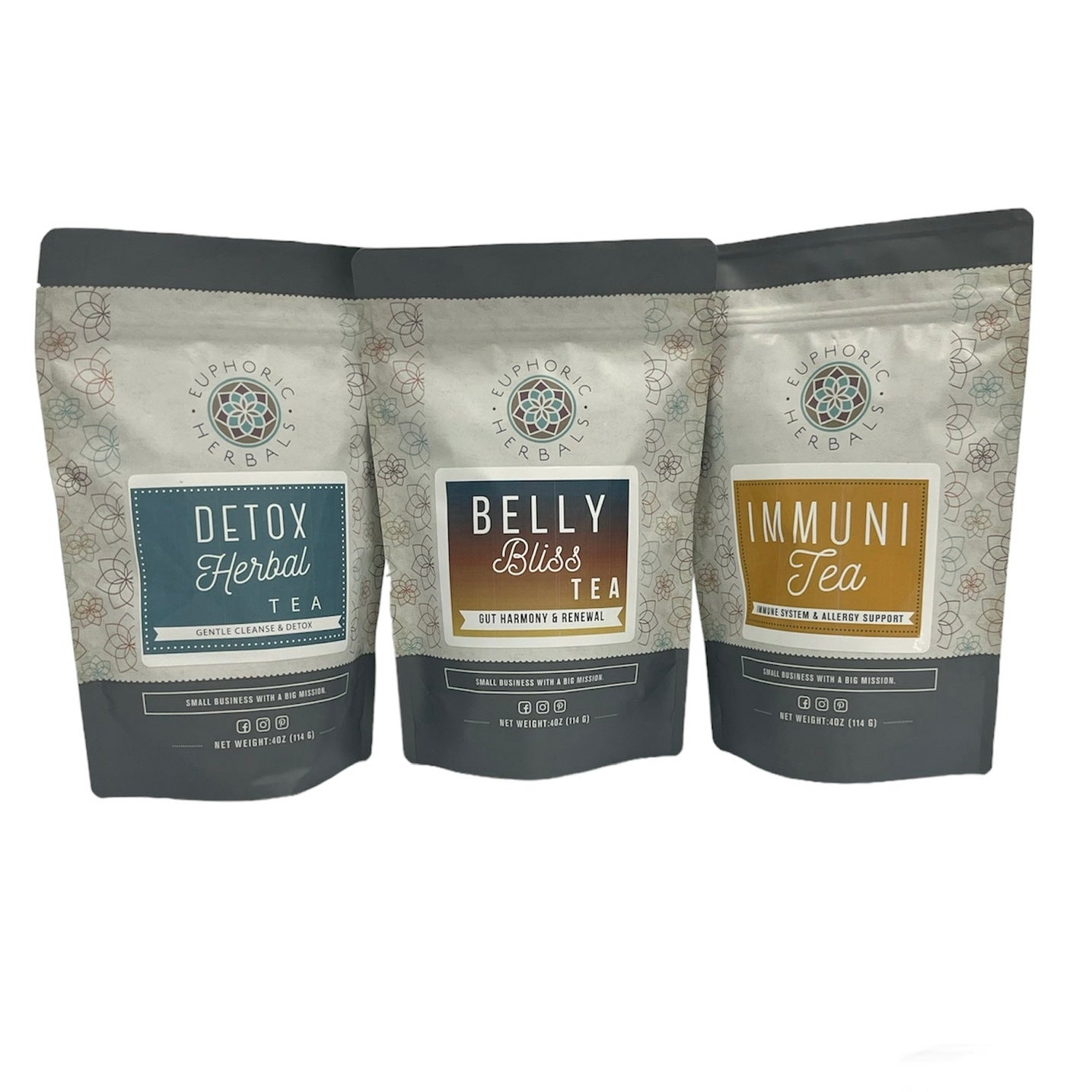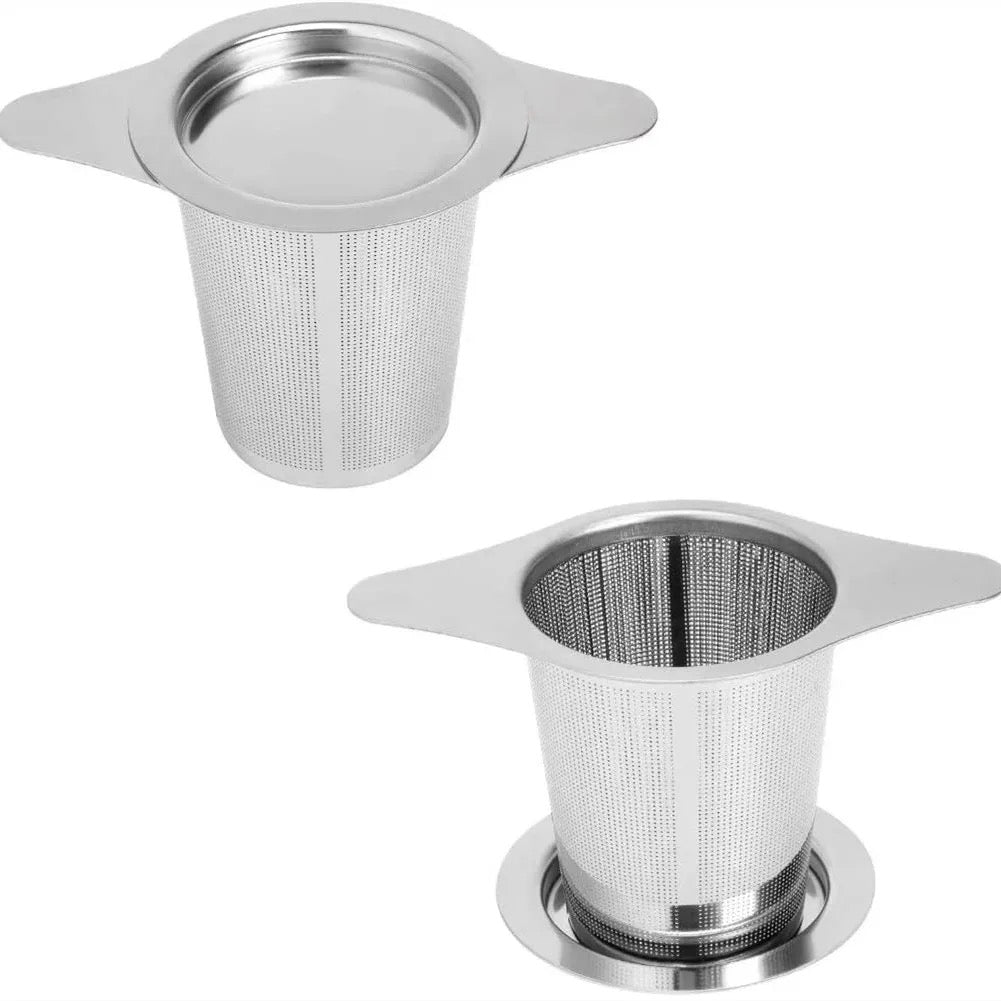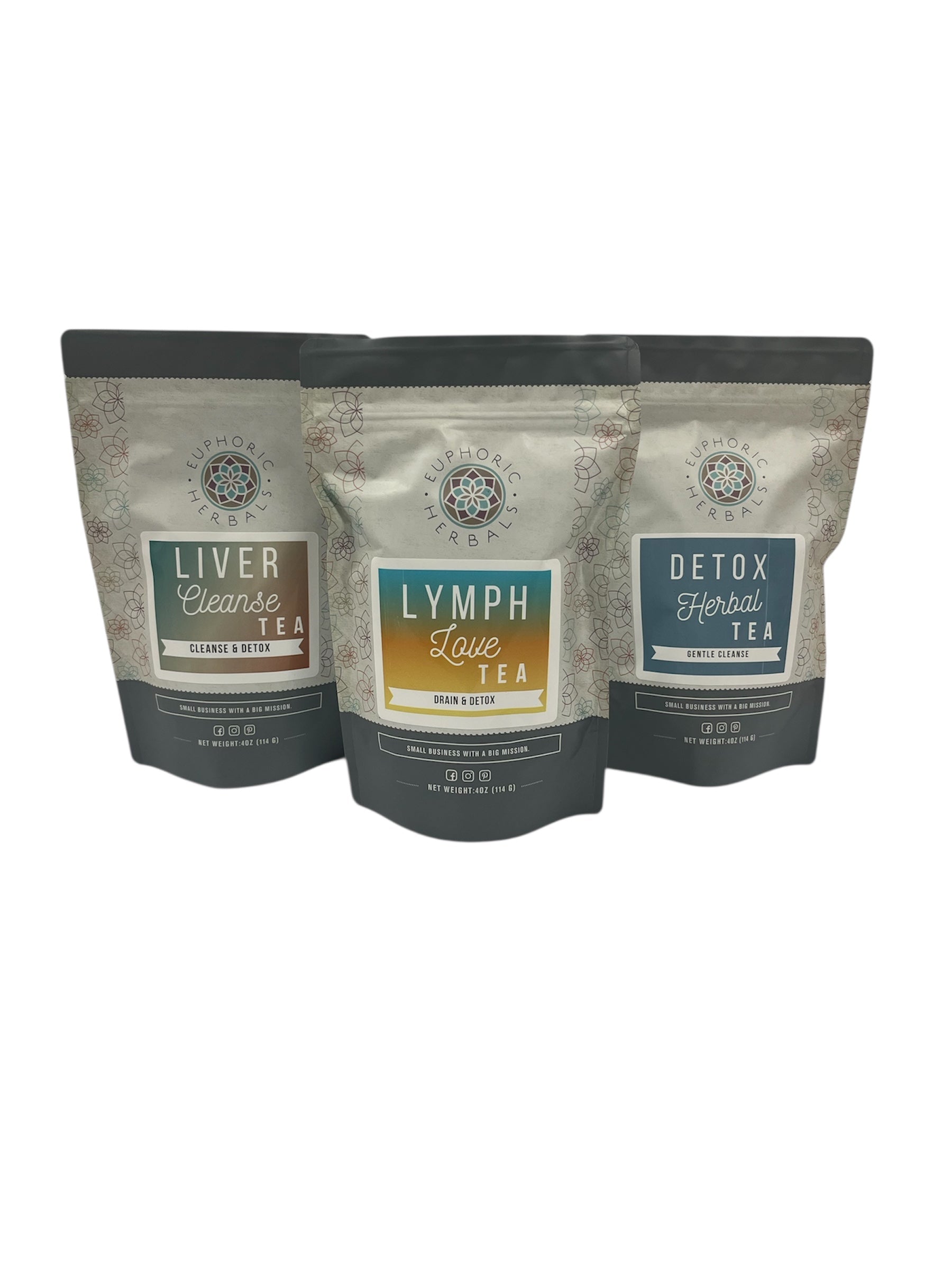If you have seasonal allergies, you might associate goldenrod with sneezing and sniffling. In fact, goldenrod is a much valued medicinal herb with many health benefits. There's also the fact that ragweed is usually sneakily responsible for those late summer allergies- not goldenrod.
Goldenrod lights up the landscape when it starts blooming, and these native plants were much valued by the Native Americans. They also thrive in many other areas around the world and have found their way into many traditional medicinal practices.
Here's more about the surprising benefits of goldenrod and how you can use it for wellness.
All About Goldenrod
Goldenrod (Solidago sp.) is a yellow-gold wildflower often viewed as a common weed. Over 50 species of it are native to the Americas, and it grows widely in Europe and Asia as well.
You'll most often find goldenrod in meadows, fields, and other wild areas, although it can also be cultivated. The plants start blooming with cheerful, sunshiny flowers in late summer or early fall. These abundant flowers were once thought to cause fall allergies, but ragweed is most often the actual culprit.
The pollen of goldenrod is heavy and carried from plant to plant by insects. Ragweed's pollen, on the other hand, is light and carried by the wind, often straight to allergy sufferers. The flowers of ragweed are so small and inconspicuous that it took a while for its allergic potential to be discovered.
Most often, the leaves and flowers of goldenrod are used medicinally. Native Americans frequently used the roots as well, but this didn't carry over into modern herbalism.
Many of the benefits of goldenrod come from its astringent and anti-inflammatory nature. It also has antimicrobial and diuretic properties and has been used for everything from fevers to snakebites to urinary tract infections.
Top Benefits of Goldenrod
Full of Antioxidants

Antioxidants are key to staying healthy as you age. They protect your cells from oxidative damage caused by free radicals, which has been linked to many chronic diseases, including cancer. (1)(2)
Goldenrod is full of antioxidants with concentrations ranging as high as seven times that of green tea. Green tea has been the subject of many studies and has been shown to have many health benefits, especially the ability to reduce the risk of chronic conditions. (3)(4)(5)
There aren't such detailed studies on goldenrod yet, but one of its antioxidants (rutin) has demonstrated potential anticancer properties. (6)
Eases Inflammation and Pain
One of the most powerful benefits of goldenrod is its ability to reduce inflammation and pain. It's frequently infused into oil and used topically in salves and creams for sore muscles, injuries, arthritis, etc.
The anti-inflammatory effects of goldenrod have long been known by herbalists. A few clinical trials on Chilean goldenrod (Solidago chilensis) have confirmed that topical use can decrease pain. Another study compared a medicine made with goldenrod, aspen bark, and ash bark to common NSAIDs. They were found to be equally effective. (7)
If you don't want to make your own infused oil, try goldenrod in this Muscle Mend salve where it's combined with other pain-relieving herbs.
Supports Bladder and Kidney Health
Goldenrod has a long history of use for the urinary system and bladder health. It's an astringent, which means it tones and tightens tissues, and an antiseptic, which means it fights certain infections. Both of these properties explain its regular use for urinary tract infections (UTIs).
Goldenrod also has diuretic properties. It can increase urine flow, which helps to flush out toxins, potentially preventing kidney stones from forming. (8) The German Commission E has actually approved goldenrod rod for use in irrigation therapy for urinary and kidney problems. (9)
Relief for Congestion and Colds

Goldenrod can be supportive during a cold or the flu, especially when you're feeling congested. It helps to break up mucus in your lungs, allowing you to expel it and breathe better. It's also a mild diaphoretic that will support your body during a fever.
You can try drinking goldenrod tea to relieve a sore throat as well. Its anti-inflammatory and antiseptic properties are very soothing.
May Help Seasonal Allergies
Ironically, another of the benefits of goldenrod is helping with the seasonal allergies it's accused of causing. Because it's an astringent (drying) herb, goldenrod is most helpful for symptoms like runny nose, runny eyes, and sneezing.
You can take a goldenrod tincture regularly during the time you most often suffer from allergies. Some herbalists also recommend it for allergies to cats and other pets.
Healing for Skin
The Latin word for goldenrod, Solidago, comes from a word that means "to make whole." This likely refers to its ability to heal the skin. Native Americans once used it frequently for wounds, burns, and sores. They would use it as a poultice applied to damaged skin or as a skin wash.
Today, goldenrod isn't used for this purpose as much as other herbs like yarrow and plantain. However, some herbalists still use it for the skin in poultices or salves. It can even help with toothaches.
May Help Diarrhea
Goldenrod has been used as a remedy for diarrhea in the past. Its astringent, drying nature helps to tone tissues in the digestive tract. It likely also helps with inflammation caused by digestive upset and diarrhea.
The bitter nature of goldenrod helps overall to stimulate digestion and improve absorption of nutrients.
How to Use Goldenrod

Goldenrod is most often used internally as a tea or tincture. It can be infused into oil for topical use or made into a poultice. The infused oil can be used to make salves, ointments, lotions, and creams.
For a sweeter remedy (perhaps to use on a sore throat) goldenrod can be infused into honey or made into a syrup.
To make a tea, use about a tablespoon of the dried herb for every cup of hot water. Infuse for at least 15 minutes before straining and drinking. You can infuse longer, but goldenrod tea will get more bitter as it steeps. Feel free to sweeten your tea with honey or combine with another herb like peppermint to cover some of the bitterness.
Besides using it dried, goldenrod can be found fresh in abundance during late summer and fall. Be sure of your identification before harvesting, since goldenrod often grows by toxic plant species like groundsel and ragwort.
Precautions
Even though it's not responsible for the majority of seasonal allergies, goldenrod can still cause an allergic reaction in certain people. Do a patch test before using it on your skin and start out with small doses internally.
Goldenrod can also be overly drying if you already have a constitution that tends toward dryness. Short-term use should be fine, but long-term use can exacerbate dryness.
Goldenrod is not recommended for internal use during pregnancy.
Discovering the Benefits of Goldenrod
Far from being simply a common wildflower, the health benefits of goldenrod have been valued for centuries. Try it in a salve to soothe sore muscles, as a tea for congestion or a sore throat, or as a source of powerful antioxidants.
The next time you see goldenrod growing by the side of the road or in a meadow you might look at it differently!






















































